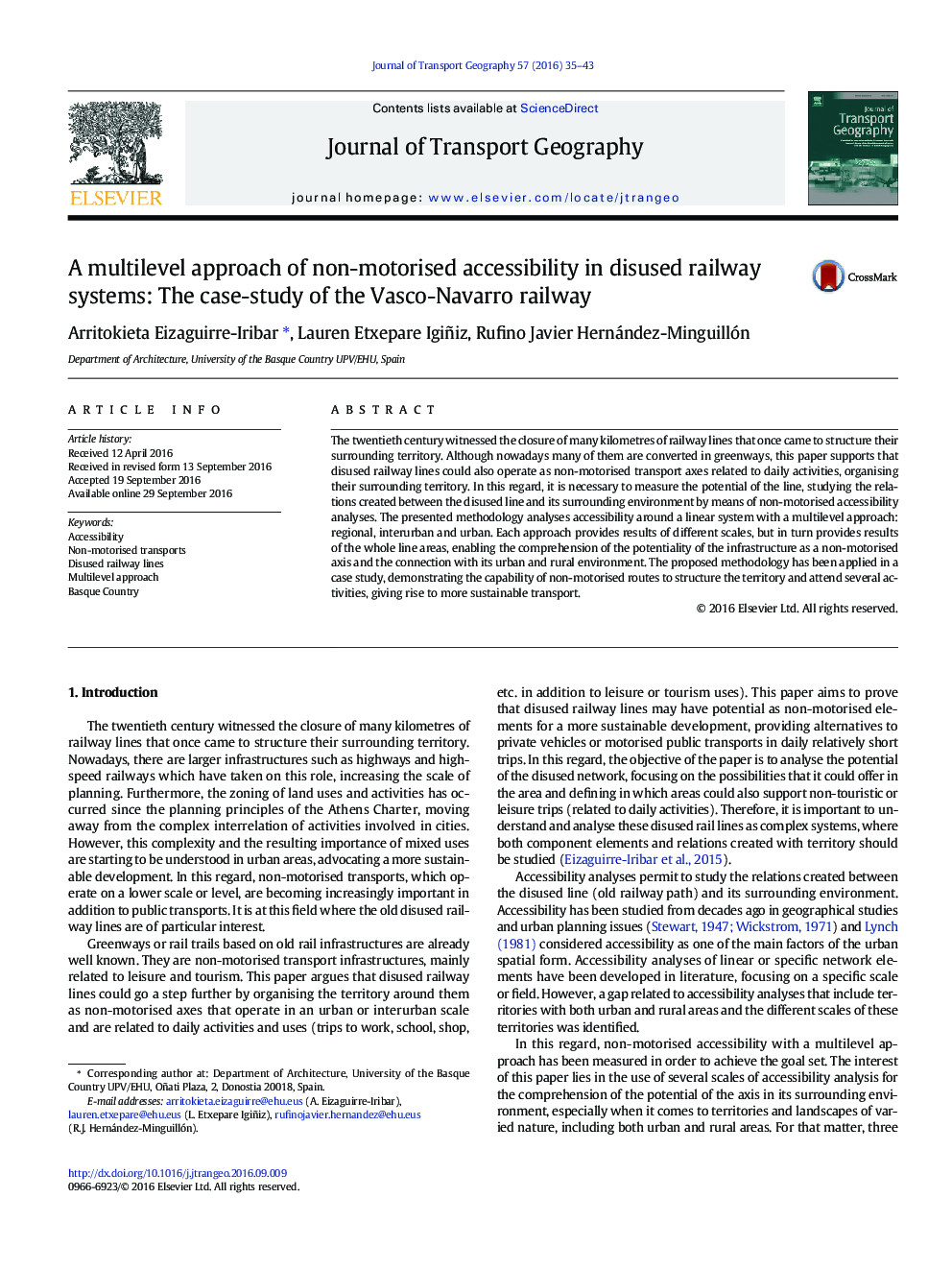| Article ID | Journal | Published Year | Pages | File Type |
|---|---|---|---|---|
| 5117571 | Journal of Transport Geography | 2016 | 9 Pages |
The twentieth century witnessed the closure of many kilometres of railway lines that once came to structure their surrounding territory. Although nowadays many of them are converted in greenways, this paper supports that disused railway lines could also operate as non-motorised transport axes related to daily activities, organising their surrounding territory. In this regard, it is necessary to measure the potential of the line, studying the relations created between the disused line and its surrounding environment by means of non-motorised accessibility analyses. The presented methodology analyses accessibility around a linear system with a multilevel approach: regional, interurban and urban. Each approach provides results of different scales, but in turn provides results of the whole line areas, enabling the comprehension of the potentiality of the infrastructure as a non-motorised axis and the connection with its urban and rural environment. The proposed methodology has been applied in a case study, demonstrating the capability of non-motorised routes to structure the territory and attend several activities, giving rise to more sustainable transport.
